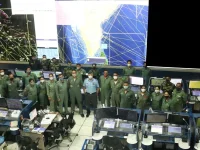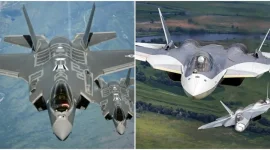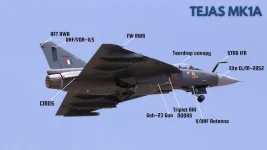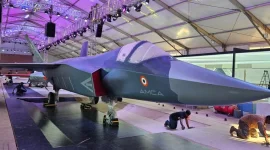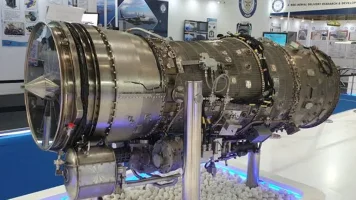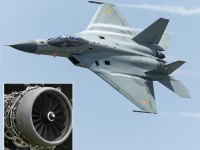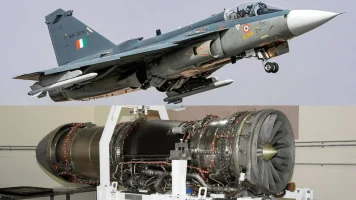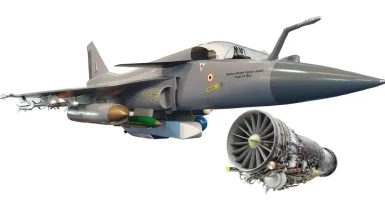In a major boost to India's indigenous military aviation program, the Tejas Mk1A Light Combat Aircraft (LCA) has been showcased with a newly integrated dual-pylon system, effectively doubling its capacity for close-combat missiles.
The new configuration, featuring the Advanced Short-Range Air-to-Air Missile (ASRAAM), was a highlight at the Aero India 2025 exposition, signalling a substantial enhancement of the fighter jet's combat effectiveness.
Developed by Hindustan Aeronautics Limited (HAL), the innovative dual-pylon adapter allows two missiles to be mounted on a single hardpoint, or weapon station, on the aircraft. This upgrade immediately doubles the Tejas Mk1A’s arsenal of air-to-air missiles for dogfights.
More importantly, it frees up other hardpoints to carry a versatile mix of additional weapons, including precision-guided bombs or long-range missiles, thereby enhancing the aircraft's flexibility for diverse mission roles.
The weapon at the centre of this upgrade is the ASRAAM, a formidable missile developed by European manufacturer MBDA.
Known for its high speed, which is in excess of Mach 3, and an advanced imaging infrared seeker, the ASRAAM provides a "first shot, first kill" capability.
Its "Lock-On After Launch" (LOAL) feature allows the pilot to fire the missile and have it acquire a target afterwards, making it exceptionally deadly in close-quarter aerial combat against enemy fighters and drones.
The Tejas Mk1A is a significantly improved version of India's homegrown light combat fighter.\
It incorporates critical upgrades over the initial Tejas Mk1, including an Active Electronically Scanned Array (AESA) radar for superior target detection, an advanced mission computer, a modern electronic warfare suite for enhanced self-protection, and improved maintainability.
These features are designed to meet the rigorous demands of the Indian Air Force (IAF) for a modern multi-role aircraft capable of operating in heavily contested airspace.
The static display of the enhanced aircraft at Aero India in Bengaluru drew considerable interest from military officials and defence analysts.
It served as a clear demonstration of HAL's progress in advancing the Tejas platform, a cornerstone of India's national policy of self-reliance in defence manufacturing, known as 'Aatmanirbhar Bharat'.
Furthering its firepower, HAL is also developing a similar dual-pylon configuration for India’s indigenous Astra series of Beyond Visual Range (BVR) air-to-air missiles.
Integrating a dual rack for the Astra Mk1 and the in-development Mk2 missiles, which have a reported range of over 160 km, will grant the Tejas Mk1A superior capability to engage enemy aircraft from extended distances, complementing its enhanced dogfighting prowess.
This upgrade is a critical development for the Indian Air Force, which is working to overcome a shortfall in its fighter fleet. With a current strength of approximately 31 squadrons against a sanctioned requirement of 42, the IAF is phasing out its ageing MiG-21 fleets.
The timely induction of the modernised and more lethal Tejas Mk1A is pivotal to bridging this capability gap and maintaining a credible defence posture.
The ability to carry a larger and more diverse weapons load makes the Tejas Mk1A a more versatile asset for a range of military operations, from air defence to ground strikes. This enhanced combat potential is crucial for countering advanced aircraft operated by regional adversaries.
By integrating both foreign and indigenous weapon systems, the Tejas Mk1A program not only strengthens national security but also significantly reduces India's dependence on international suppliers.
- Read in Other Language
- Hindi

